All professionals in the industry know the great importance of colostrum intake in the first hours of a piglet's life. Pre-weaning mortality (PWM) goes down from 64% to 10% when the piglet exceeds 200 g of colostrum intake (N. Devillers et al, 2012. Figure 1.)
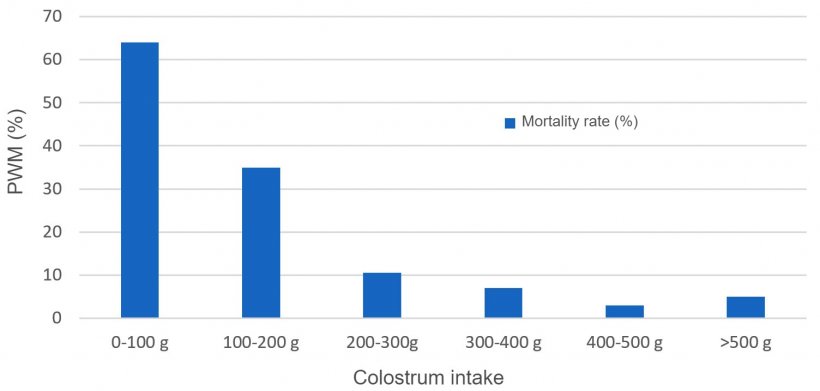
Figure 1. Relationship between colostrum intake and pre-weaning mortality (PWM)

This important work in the farrowing unit has become more and more complicated over the years and with the advances in genetics. The increase of total born (3 piglets / litter in 10 years) is a potential productive advantage. Nevertheless, it usually goes hand in hand with a greater birth weight variability and more piglets born lighter than 1,13 kg. As a consequence, PWM percentages according to the age of the piglet have evolved: 10 years ago, 70% of the mortality occurred on the first day of life; now it is distributed more equally amongst different age ranges, and casualties have doubled between days 2 and 7, making them equal to those on the first day of life in 2017 (Data from PigCHAMP Pro Europe, 155 Figure 2.)
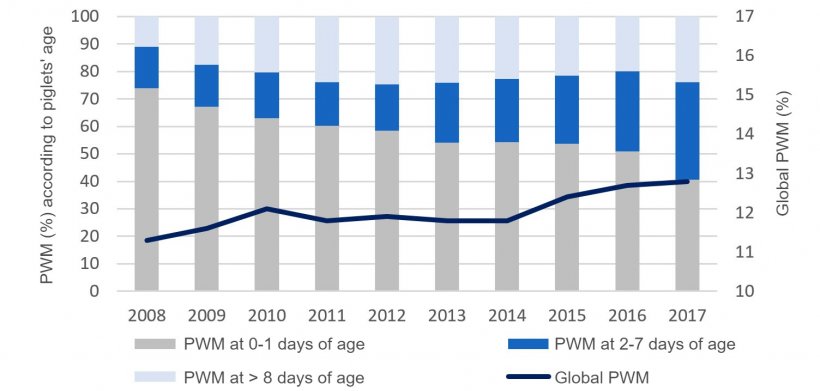
Figure 2. Evolution of pre-weaning mortality (MPD) distribution by age in the last decade. PigCHAMP Pro Europe Database.
On the other hand, the increase in prolificacy has not been accompanied by a proportional increase in the amount of colostrum (Jourquin and Morales, 2018); putting piglets with a lower birth weight at a disadvantage compared to the rest. In these circumstances, improvement of care and colostrum intake for these piglets is one of the main measures to control the problem.
We are not only talking about split colostrum suckling, but also about ensuring the good vitality of the piglets by drying them after birth, giving them sources of heat, and of course providing extra assistance to the small piglets so that they can take the minimum required amount of colostrum from their dam as soon as possible. This minimum amount required to survive, is at least 30% of their live weight (Jourquin and Morales, 2018).
This last task is usually the most expensive to implement on farm. It requires time, patience and awareness on the part of the operator, who often, through lack of effort, identifies the smallest piglets as not viable when they are viable.
Production managers know very well that they have casualties losses due to poor colostrum intake in the farrowing unit, but how many, really? Are they just being classified as non-viable piglets? Are there more or less than I suspect? How can I make the staff aware of the problem?
One strategy to answer all these questions is to "quantify" this population of piglets.
Next, we show the process and first results in 4 farms that sought to better identify the number of casualties due to poor colostrum intake, and then use this data to make staff aware of the importance of a good execution and control of this process. Farrowings are induced in the 4 farms, most of them occurring during the working day.
As a first step, a new cause of casualties during lactation was created: Small size.
The staff are responsible for registering the cause of the casualties, and this is the farmer's first challenge: training the staff to accurately differentiate, in the conditions of his farm, the non-viable piglets from the small ones, since we suspect this to be the main problem.
To do this, the staff weighs the piglets at farrowing (Figure 3). The goal is to thoroughly train the person responsible for identifying the cause of the casualty, and to define clear cut points:
- Non-viable piglet: All piglets weighing less than 800 grams at farrowing.
- Small piglet: All piglets with no other identifiable casualty cause (crushed, cold, etc.) weighing more than 800 g and less than 1.2 kg (the benchmark figure is 1.13 kg (Jourquin and Morales, 2016), but 1.2 was chosen instead to simplify the task of the operators)
A decision was made to register and analyse the causes of casualties at least 6 months before reaching the first conclusions and making decisions.
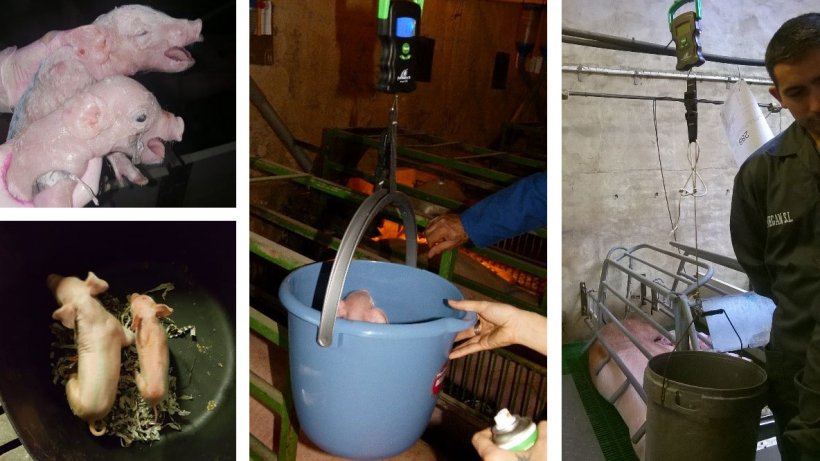
Figure 3. Images of weighings at farrowing and differences in size within the same litter.

These new data began to be recorded in January 2018, and all the farms experienced changes in the patterns of distribution of casualties, especially in relation to the non-viable cause and others, as shown in figures 4, 5,6 and 7 below.
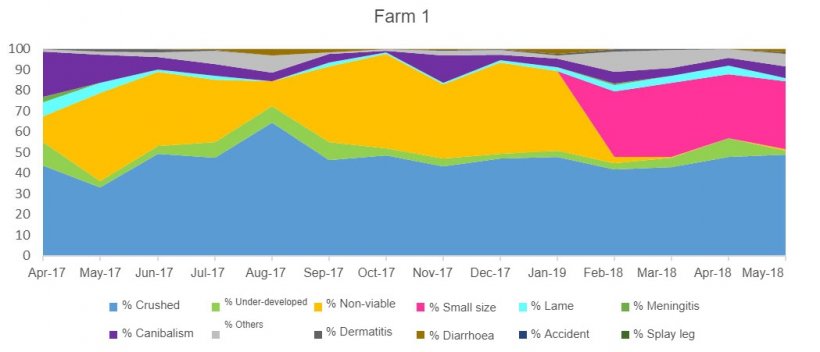
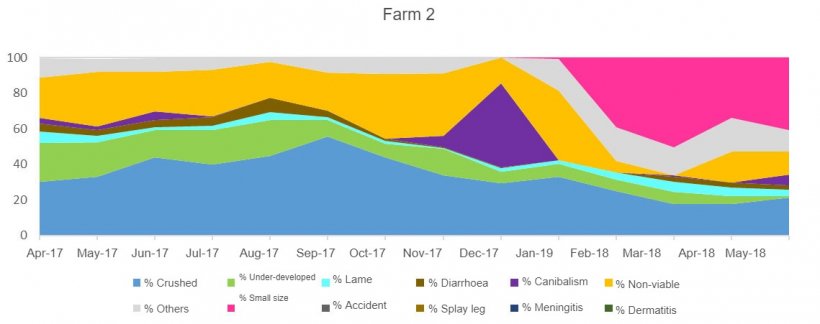
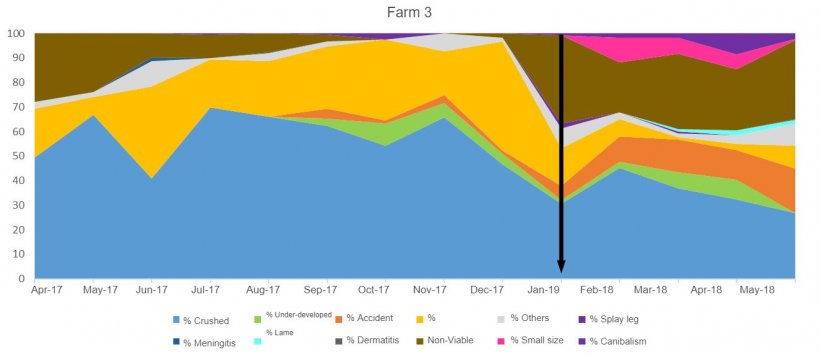

Figures 4, 5 6 and 7. Distribution of pre-weaning mortality amongst piglets according to the types of casualty in different farms.
In order to better define this change in trend, piglets age at the time of casualty was analysed and compared to the situation before introducing the new concept "Small size". Figure 8 shows how, in all cases, the average age of non-viable piglets decreases when the new cause is introduced.
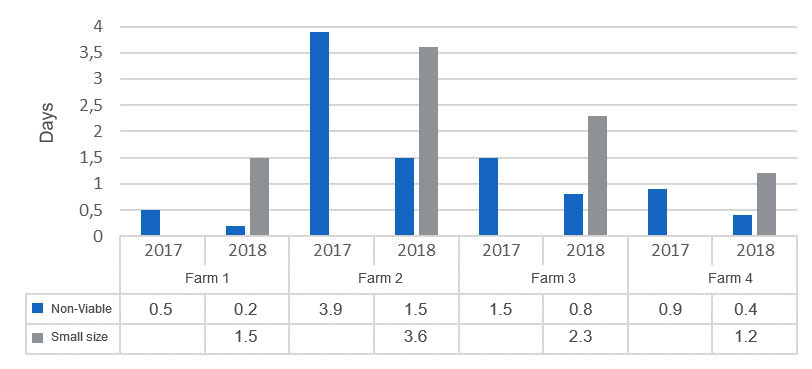
Figure 8. Age of Non-viable and Small-size casualties.
It seems that many of the animals identified as non-viable are not so. They are just smaller animals which should be treated with more care, starting with colostrum intake and possibly, depending on each farm, improving early cross fostering and litter adjustments.
Once the 6-month data collection period has been completed, the first objective can be met: quantify this problem more precisely and use it to raise awareness among the staff that part of these piglets can be saved with better care in the first hours of life.
And as usual, it will be the figures, and not the feelings, that will determine the degree of improvement in each farm after applying this criterion together with the appropriate working protocol.





